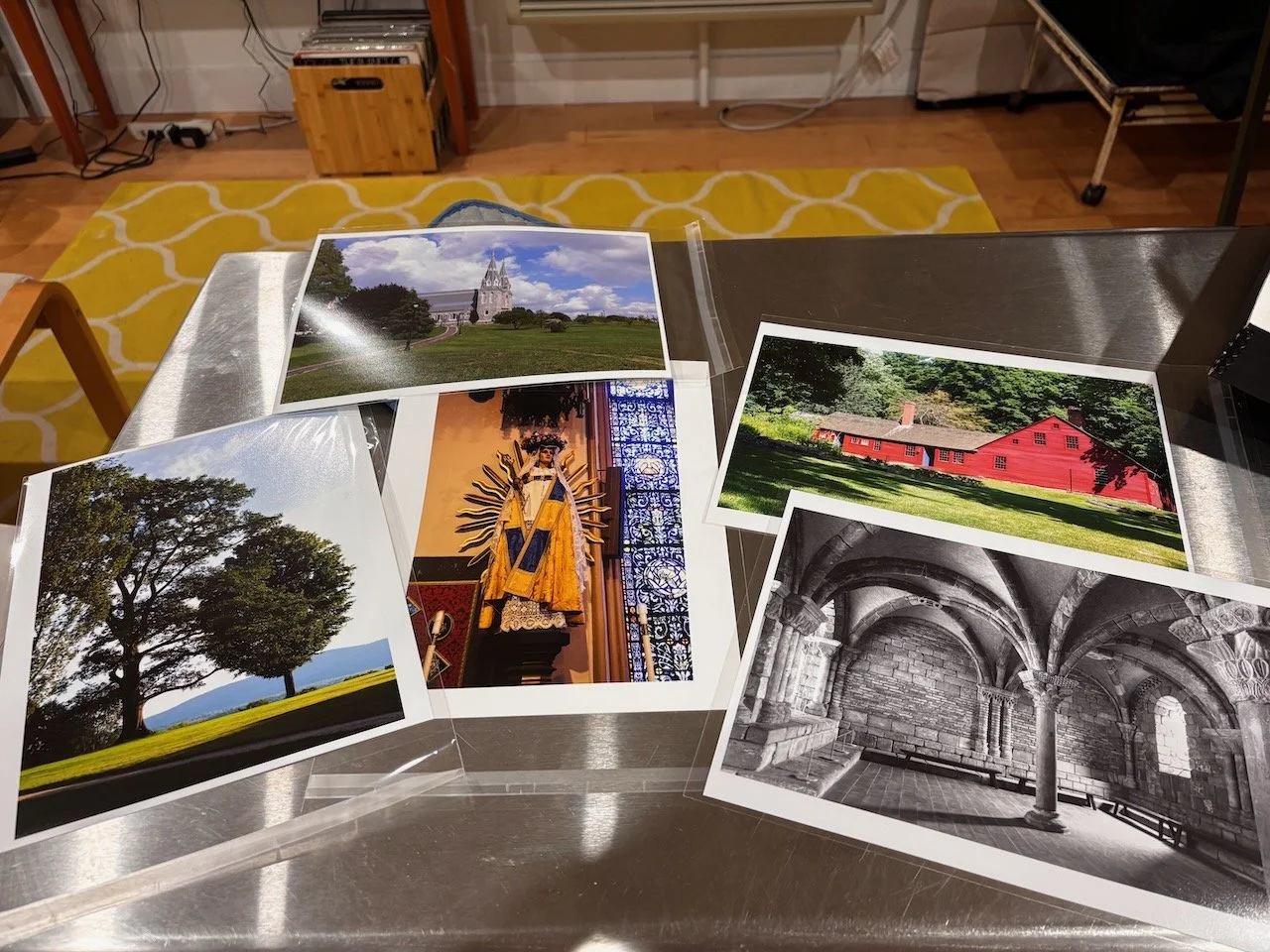Use a Photo Printer?
View of First Prints from New Photo Printer
Several weeks ago, I sent out a favorite image to a nationally-known lab and was not pleased with the print returned to me from that lab. The image was quite inferior to the image I had edited on my computer. It should be noted that there is bound to be a difference between an image that is ‘back lit’ by a computer and an image that reflects light as it strikes the ink ‘pixels’ making up the image that is printed onto a piece of photo paper. So adjustments must be made to the image you wish to print at home or to have it printed by a lab. Still, there is that nagging question of whether to entrust your special image to a lab for printing. And the prices charged by ‘high-end’ labs can be high. Which brings about a decision regarding a purchase of a home photo printer. Home photo printers, like photo labs, vary in their prices and the types of output. Do you want a home photo printer that faithfully reproduce snapshots or do you want to invest in a ‘pro-printer’ that can produce better prints than what a typical lab can produce?
As a serious photographer who has read much about the joy (and challenge) of printing out a favorite image and to hold that image in one’s hands, I decided to invest in a ‘pro-printer’ made by Canon. Canon and Epson are considered as powerhouses in the photo printer business. What I acquired was a printer that used ‘pigmented’ inks instead of dye-based inks. It meant a larger investment. But photos printed with pigmented inks could last for many decades, perhaps over a century, if the prints were properly cared for. I belong to a church in Philadelphia that has an archive department and I do wish to offer photos of that church that I had taken that they could be used by future generations of researchers. I also have close friends who are serious photographers who would enjoy the pleasure of seeing photos ‘on paper’ instead of just on some screen. So was that ‘splurge’ for a pro-printer worth it?
As soon as I had my printer set up and ready to produce its first prints, it was time to pick a few favorite images and to put those images on paper. My new printer came with a starter supply of ‘luster’ photo paper. I also bought sample sets of other types of photo photo per as well. And so came out the first prints from my new printer. ‘Delighted’ was my reaction. I had done the pre-printing prep work of preparing my first images that included the ‘resizing’ of images so that the images would appear sharp and best appear closest to the images that had been ‘projected’ by my computer. When I showed my prints to several friends of mine during a post church-service coffee house, they shared in my delight of seeing and handling the prints. It is now likely that I will not use a photo lab for my future prints. Some labs do offer both printing and framing services. But a framed print from a high-end lab could be pricey and it would be a real bummer if the framed photo were not to my ‘specs’ I had set in my photo editor program for the image in the framed print. My home city, Philadelphia, as an artistic city, has a good number of frame shops where I could take my prints in for framing and know that my prints will be well-treated.
So the question is this: Do you want to invest in a home photo printer? Or do you want to entrust your printing jobs to a lab? The answer to that question is not so quick. Are you a serious photographer who wants to make sure that prints of your artistic work do reflect the aims of your work or the desires of your clients? Are you willing to entrust your snapshots to a photo lab? Do you want a ‘pro-printer’ or are you content with a less-costly model that can often produce prints that are satisfactory to your desires? Trust your photographic instincts! Photography is a wonderful endeavor and printing is a big component of that endeavor. Whenever I see people at various places who stare at their mobile phones and computers, I often would like to tell these dudes that there is a world beyond the screen. The real world of photographic prints that you can see AND handle is a world that requires no batteries or the ‘Internet’. Around the turn of the century, stores sold ‘digital photo frames’ which glowed with images captured on camera disks. But those frames, which are still available today, can run up to a few hundred dollars. About the price of a decent photo printer…..
